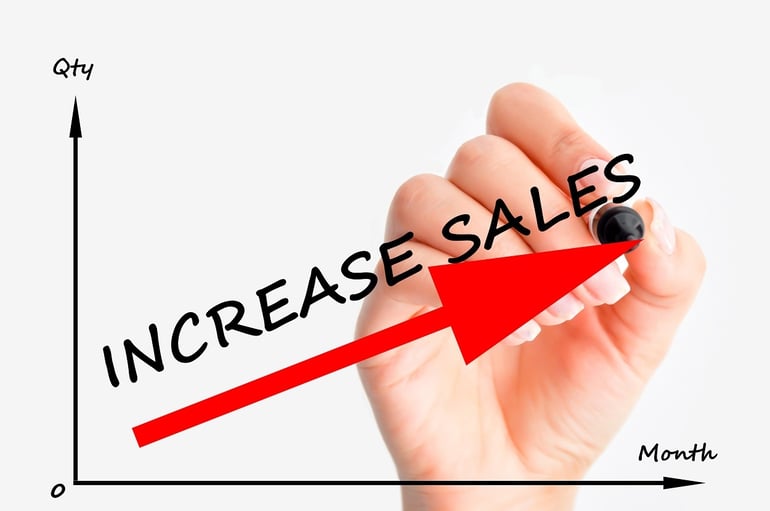As a sales professional, it’s clear that you’ve determined your sales process. You’re well aware how an exemplary prospect grows from an email address in your CRM to a paying customer. You’ve engaged in sales training highlighting the necessary actions to move prospects from one stage to the other. But, is your sales process working?
With multitudes of ways to measure sales performance, picking the right sales metrics can be tough. Luckily, the clear-cut way to determine how effective your sales process is by:
- Your lead to opportunity conversion rate
- Your opportunity to close conversion rate
But first, none of this is attainable without Lifecycle Stages. Lifecycle Stages help you arrange your contacts based on the stage they’re in of your sales process.
How do you acquire a customer? The answer to this question will determine the definition of your “lead”. Take LinkedIn, for example, any LinkedIn user you establish as a good fit, connect with, reach out to and follow up with via email can turn into a lead. If you’re meeting prospects at networking events, a lead can be anyone who left their email address at your booth or any person you exchanged information with.
An “opportunity” arises when a contact in your CRM confirms their interest in your product or service- whether through email, over the phone, requesting a meeting, etc.
How Many of Your Leads Turn into Opportunities?
This metric will tell you tons of things! Are you accumulating enough leads to hit your goal? Are your leads converting into opportunities, but you’re still missing quota? This means you need to generate more leads!
Are you proactively following up with your leads? If you’re converting a low percentage of leads into opportunities, chances are that your follow-up is the problem. But how? Evaluate your approach. Is it script? Short and bland? Are you personalizing your interaction? Finding a common connection has potential to be a deal closer! Be sure you’re using multiple channels – phone calls, voicemail, email, social media, mailing card, etc. How many times are you reaching out before calling quits? We hear all the time that “persistence is key!” and in this case, it’s nothing less. Be adamant about pursuing your intentions so your potential client knows that you mean business.
Don't find customers for your products, find products for your customers. "
-Seth Godin
Be sure to monitor the number of leads you’re trying to contact, in all. Suppose Marketing sends you about 50 leads per month, but on average, you email 10 of those leads. Chances are they may be poor quality leads. Revisit why you did not work specific leads- was the company too small to need your product? Were they satisfied with the company they were already using? Or were they just “not interested?” Your answers to these questions will conclude if you tried as hard as you should have, or if you were just being inadequate and lazy.
How Many of Your Sales Opportunities Become Paying Clients?Undoubtedly, this percentage varies by industry-which is reason it’s important to compare opportunity to close rates of other businesses with likeliness to yours. With 8,900 companies across 28 industries, HubSpot found the average close rate for hospitality is 11%, amid the average closing rate for arts and entertainment is 28%.
As far as overall outcomes, make sure you’re not being too selective with accounts you choose to work with- if your opportunity to close rate is 60% or higher, you’re praying on the easy goers who are expected to buy, close to perfect fits or take little convincing.

So What’s The Problem, Right?
You’re leaving money on the table! Don’t sell your product or services short- the demand is there! Hire more reps, expand your team and your demographic and HIT THAT GOAL!
Is Your Opportunity to Close Rate Extremely Low?
Where down your sales process are you losing your grip?Are your prospects losing interested after connecting calls? Show them that you are a profitable resource; offering immediate value helps buyers recognize the benefit of maintaining the relationship. Do your prospects go dark after a demo, leaving you in stuck in the mud? Train on giving personalized, benefit-driven presentations with set in stone next steps.
Conclusively, compare your opportunity to close rate to your team average. This will tell you two things:
- If theirs are lower, they need training or a performance place.
- If their average is right in line, they’re a credible performer.
Make sure you and your team work together. Use your top performers as mentors for your other salespeople. Things get very competitive, but when the team wins you all win!
Everything about your sales can be measured- but is that really how you want to spend your time? Keep attention on these two metrics and you will spot the problems, find the opportunities, and increase your results!
















